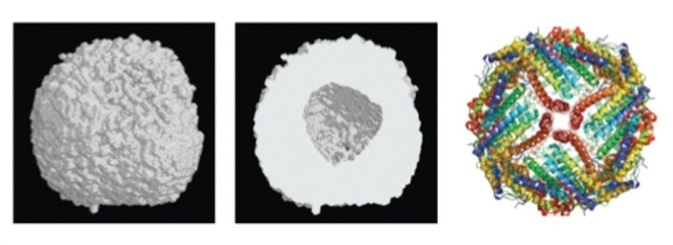This article addresses several applications of current laboratory PXRD platforms in the pharmaceutical field, especially in ensuring quality control and product stability, as well as speeding up product development so that market availability occurs sooner. All of these uses are possible with the same PXRD device.
Detection of Trace Impurities and Polymorphs
In pharmaceuticals, PXRD is most commonly used to detect traces of polymers. Better detectors and optical technologies are being developed primarily to push the limits of detection (LOD) still lower. The traditional PXRD configurations have LOD within 0.5 to 2 percent, but this has been brought down to as little as 0.1 percent, which is one order of magnitude below the level that has been considered to be the limit of detection.
Such superlative LODs are made possible by optical systems that suppress background radiation or Bremsstrahlung, which leads to a much better ratio of signal to noise in the received data. One example of this type of optical system is the Malvern Panalytical Bragg-BrentanoHD optic (BBHD).
Set a new standard for high quality powder diffraction data with the Bragg-BrentanoHD
Determination of Amorphous Substances
The partial least squares (PLS) method is ideal for applications and techniques such as FT-IR for amorphous content determination in pharmaceutical compounds, especially when there are no observable peaks caused by one phase. This method develops calibration models using either the whole or a part of the spectrum.
PLS is a suitable method in terms of precision and dependability when it comes to quantitative measurement of amorphous content at low concentrations.
Assessing Parameters for Co-Crystallization and Polymorphs
Analyzing for polymorphs and screening for salts is thus a potentially helpful step in selecting the right solid state of a drug molecule which will provide an optimum level for all its critical properties.
PXRD platforms may be equipped using an X-Y-Z stage so that samples may be subjected to a combination of screening tests in one well plate, giving the advantages of high resolution, and high throughput, when the transmission configuration is used.
Studying the Process of Crystallization
All pharmaceutical processes depend upon crystallization to a large extent since it is key to making the process efficient and profitable. Unobserved variations in the crystallization process can result in changes within the structure of the crystals which in turn leads to altered bioavailability and product safety.
This is why it is vital to keep a watch over the process of crystallization both during the research and the scale-up phase to achieve a successful QbD setup. If a laboratory PXRD system is used with a flow cell a number of crystallization features may be studied simultaneously in situ, including the formation of hemihydrates and intermediates during the process, and the optimal parameters such as the appropriate pH, solvent and anti-solvent concentrations required.
Assessing Protein Properties such as Shape, Compactness, Oligomeric State and Stability to Temperature Changes
A traditional technique in structural biology is small-angle X-ray scattering (SAXS) of protein solutions, which allows data to be gathered on protein shape, size and structure, protein folding or unfolding, aggregation, temperature stability and molecular weight, which suggests the presence of oligomers.

Evaluation of the Effect of Heat and Humidity on Materials
Pharmaceutical substances may undergo significant alteration when exposed to heat or high levels of relative humidity (RH) while they are being stored or during transportation, causing them to change their phase. If this is unexpected, the product may have significant changes in its efficacy as a result. The risk of this event can be evaluated using currently available PXRD platforms which are fitted with advanced temperature controlled humidity stages. They thus make it possible to acquire PXRD data even if the RH is as high as 95% at room temperature, or up to 75% at 60 oC.
About Malvern Panalytical

Malvern Panalytical provides the materials and biophysical characterization technology and expertise that enable scientists and engineers to understand and control the properties of dispersed systems.
These systems range from proteins and polymers in solution, particle and nanoparticle suspensions and emulsions, through to sprays and aerosols, industrial bulk powders and high concentration slurries.
Used at all stages of research, development and manufacturing, Malvern Panalytical’s materials characterization instruments provide critical information that helps accelerate research and product development, enhance and maintain product quality and optimize process efficiency.
Sponsored Content Policy: News-Medical.net publishes articles and related content that may be derived from sources where we have existing commercial relationships, provided such content adds value to the core editorial ethos of News-Medical.Net which is to educate and inform site visitors interested in medical research, science, medical devices and treatments.